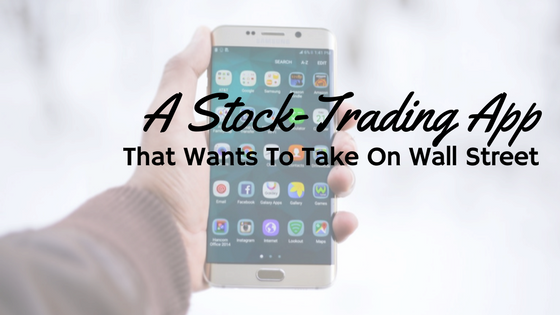
Millennials tend to prefer their services condensed into an easily digestible experience. They crave this experience, just as they romanticize sleek, streamlined innovation, and they swarm to whichever service best captures such sentiments in a fast-gratifying, affordable package. Today’s industry shakers capitalize on the millennial demographic by trimming unnecessary costs and accessories; companies such as Netflix and Uber allow their service to speak its own merit by framing it as no more or less than what it is, no-strings.
Robinhood, an experimental finance app, seeks to reproduce the success of its predecessors by offering features which follow a similar pattern of simple affordability. The app was created in 2013, a passion project of Vladimir Tenev and Baiju Bhatt, who sought to spread their enthusiasm for technology and the stock market by building a service that eases millennials into the trading game.
What separates Robinhood from the likes of ETrade, Charles Schwab, and other online brokerage services is its $0 commission policy. Once users pass an initial application process, they can buy and sell stocks free of any additional fees, which “allows all those people who were underserved by the previous generation of products to get started much sooner and with smaller amounts of money,” according to Tenev. This idea of uninhibited trading appeals to younger investors who might be dissuaded from rival services due to heavy fees.
Robinhood’s stripped down, accessible interface poses another attractive perk to novice investors. With the touch of a screen, users buy or sell stocks at market value; through Robinhood’s ultra-navigable interface, they can also make stop-loss orders, limit orders, and stop limit orders. By omitting more complex trading tools and sanding down the basics, Robinhood attempts to curb the stock market’s intimidation factor and paint trading as a hobby that is not only lucrative, but entertaining.
Boasting a net worth of $1.3 billion, $176 million raised in funding, and over two million users, Robinhood appears to have cornered the previously untapped millennial demographic. Despite its breakaway success, the app still faces challenge on the bottom line. Providing a valuable service at no user cost is done at the expense of profits, which could compromise Robinhood’s ability to expand its functionality in the future.
“With ultra cheap trades comes insanely thin margins, if any at all,” comments Blain Reinkensmeyer, Head of Broker Research at StockBrokers.com, “which means compromises will have to be made somewhere, whether it is customer service, tools, or research. There is a reason why traditional brokerages all charge high rates but combined house tens of millions of overall ‘happy’ clients.”
Robinhood’s answer to its profitability pitfalls is a $10-per-month paid subscription service called Robinhood Gold. It offers additional features, such as the ability to trade before and after hours. Equipped with this business model, Tenev believes his app now walks “a clear path to profitability.”

